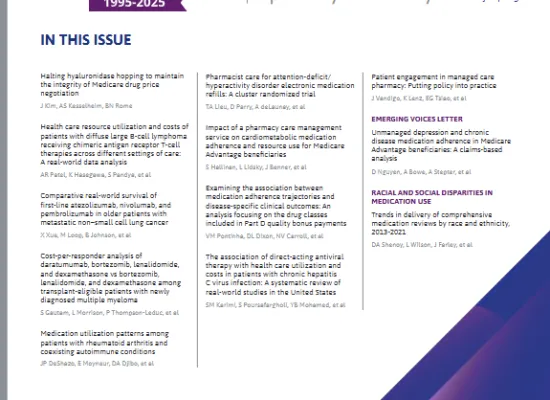
Alopecia Areata Resources
Alopecia areata is a disease when the immune system attacks hair follicles and causes hair loss. While hair can be lost from any body part, alopecia areata usually affects the head and face. Hair can fall out in small, round patches on the scalp, or in some cases, hair loss can be more extensive.
Alopecia areata is a common, clinically heterogeneous disease that affects many racial and ethnic groups. Onset may be at any age, but most patients develop it before age forty. Early-onset alopecia areata, in pediatric patients under the age of 10, tends to be a more severe subgroup.
Genetic factors, including a family history of alopecia areata, are present in some patients. The disease is also associated with autoimmunity. This has been demonstrated by the occurrence of the disease in association with autoimmune disorders, including psoriasis, thyroid disease, and vitiligo. It also occurs more frequently in patients with comorbid allergies, including hay fever.1
First Word From the Experts: Litfulo™ (ritlecitinib) Approved for Alopecia Areata
Recently, the FDA approved Litfulo™ (ritlecitinib), a kinase inhibitor, for the treatment of severe alopecia areata in adults and adolescents aged 12 years and older. Alopecia areata is an inflammatory, autoimmune disease that can affect people of all ages, genders, and ethnicities. This disease can have an unpredictable course, creating a clinical challenge for treatment. Litfulo is the first and only FDA-approved treatment for alopecia areata in patients aged 12 years and older. In this video, board-certified dermatologists discuss the indication, dosing, and potential side effects of Litfulo, as well as review the results of randomized, placebo-controlled trials evaluating this medication in patients with alopecia areata and 50% or more scalp hair loss. Topics include data on improvements in alopecia severity, efficacy in reducing scalp hair loss at 24 weeks, potential for scalp hair regrowth, and the safety outcomes for this medication.
Panel:
Meena Singh, MD
Board-certified Dermatologist and Mohs Surgeon
KMC Dermatology
Brittany Craiglow, MD
Board-certified Dermatologist
Yale School of Medicine
Jennifer Soung, MD
Board-certified Dermatologist
Southern California Dermatology
Video
Journal of Managed Care + Specialty Pharmacy
- All-Cause Health Care Resource Utilization and Costs Among Adults With Alopecia Areata: A Retrospective Claims Database Study in the United States Mostaghimi A, Gandhi K, Done N, et al. Journal of Managed Care + Specialty Pharmacy. 2022 Apr;28(4):426-434.
Publications
- A Large Cross-Sectional Survey Study of the Prevalence of Alopecia Areata in the United States. Benigno M, Anastassopoulos K, Mostaghimi A, et al. Clinical, Cosmetic, and Investigational Dermatology. 2020 Apr. doi: 10.2147/CCID.S245649.
- The Alopecia Areata Investigator's Global Assessment (AA-IGA™) Scale: A Measure for Evaluating Clinically Meaningful Success in Clinical Trials. Wyrwich K W, Kitchen H, Knight S, et al. British Journal of Dermatology. 2020 Oct. doi: 10.1111/bjd.18883.
- Racial Characteristics of Alopecia Areata in the United States. Lee H, Jae Jung S, Patel A, et al. Journal of the American Academy of Dermatology. 2020 Oct. doi: 10.1016/j.jaad.2019.06.1300.
- The Alopecia Areata Consensus of Experts (ACE) Study Part II: Results of an International Expert Opinion on Diagnosis and Laboratory Evaluation for Alopecia Areata Meah N, Wall D, York K, et al. Journal of the American Academy of Dermatology. 2021 Jun. doi: 10.1016/j.jaad.2020.09.028.
- Lifestyle Factors Involved in the Pathogenesis of Alopecia Areata Minokawa Y, Sawada Y, Nakamura M. International Journal of Molecular Sciences. 2022 Jan. doi: 10.3390/ijms23031038.
- The Use of New Hematological Markers in the Diagnosis of Alopecia Areata Sarac G A, Nayir T, Yildirim P H, et al. Dermatology Practical & Conceptual. 2023 Apr. doi: 10.5826/dpc.1302a118.
- Two-Dimensional Planimetry for Alopecia Areata Severity Evaluation Compared With Severity of Alopecia Tool: A Pilot Study. Seol J E, Hong S M, Ahn S W, et al. Skin Research and Technology. doi: 10.1111/srt.13440.
- Biomarkers in Alopecia Areata: A Systematic Review and Meta-Analysis. Zaaroura H, Gilding A J, Sibbald C. Autoimmunity Reviews. doi: 10.1016/j.autrev.2023.103339.
- The Association Between the Number of Follicular Stelae and Severity and Treatment Response of Alopecia Areata Cases Gencebay, G, Askin O, Ayudin O, et al. The International Journal of Trichology. doi: 10.4103/ijt.ijt_48_19.
- The Role of Hair Follicle Counts and Ratios in the Histopathological Assessment of Androgenic Alopecia, Alopecia Areata and Telogen Effluvium: Does Counting ‘Count’? Ieremia E, Stefanato C M. Human Pathology. doi: 10.1016/j.humpath.2023.03.015.
- Trichoscopy Pattern and Evaluation of Serum Vitamin D Status in Alopecia Areata Alsenaid A, Al-Dhubaibi M S, Alhetheli G, et al. Photodiagnosis and Photodynamic Therapy. doi: 10.1016/j.pdpdt.2023.103510.
Sponsored by Pfizer.
1. National Institute of Arthritis and Musculoskeletal and Skin Diseases. (2021). Alopecia Areata. Retrieved from https://www.niams.nih.gov/health-topics/alopecia-areata.
Featured News & Resources
See Full CalendarAward Applications Open
AMCP eLearning Day: Nexus Encore
AMCP 2026 Registration Opens
Upcoming Events
AMCP offers a wide variety of educational opportunities, from events and webinars to online training.







